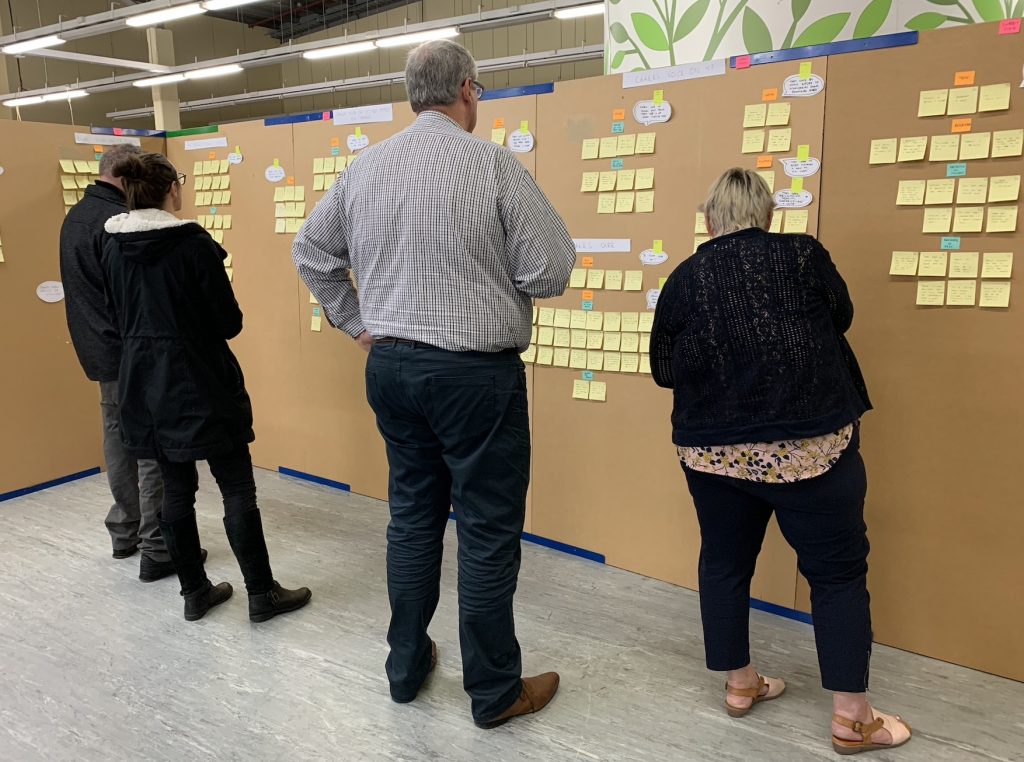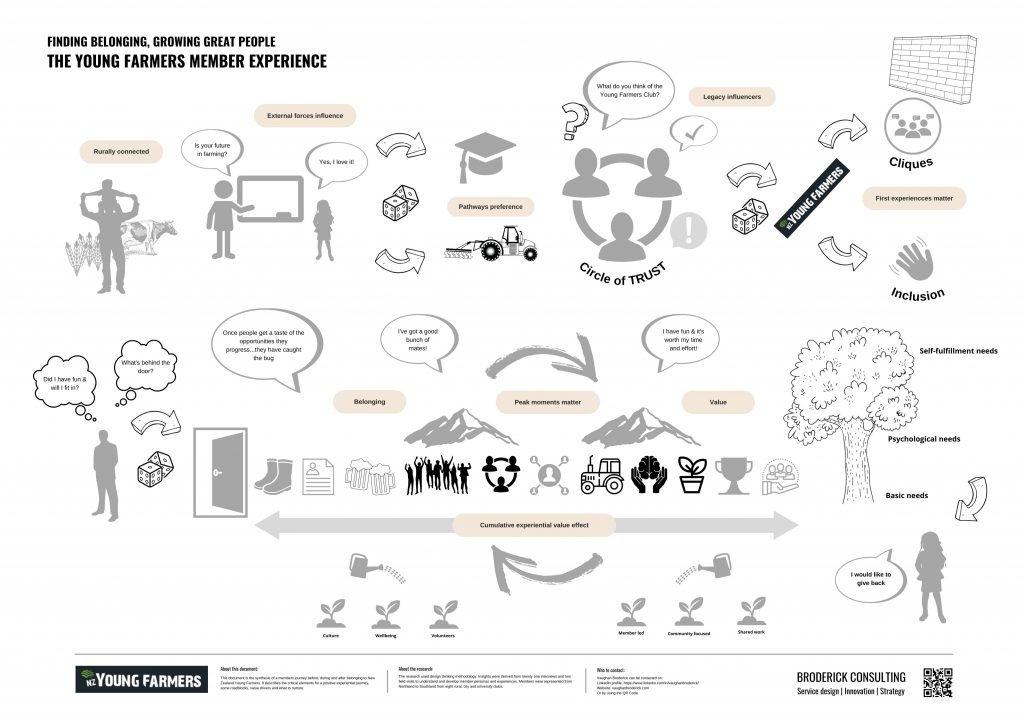According to HBR, 85% of executives believe their organisations are bad at problem diagnosis.
Diagnosing a problem accurately, is critical for creating innovative solutions during the understanding phase of design thinking.
Traditional techniques such as the 5 why’s and root cause analysis are useful and so are in-depth frameworks like Six Sigma and Scrum.
However, to arrive at innovative solutions, creative techniques are often more effective and easier to learn.
So, more and more leaders are using creative techniques to help understand the core issues and extract meaningful insights, rather than make assumptions and jump to solutions.
Meaningful insights are what future-thinking leaders use to build successful businesses.
Today, I’m going to cover:
- 7 techniques you can use to generate meaningful insights.
- Why it’s important to use more than one technique.
Read time: 5 minutes (or less) 👇
Let’s get going!
7 Techniques to Generate Surprising Insights
Once you have completed field research, it’s time to make sense of your data.
These are the 7 techniques I use regularly to generate surprising and useful insights.
Insights Technique 1 - Reframing

Reframing is a way of looking the problem differently and may help to identify a better, more human-centric question to answer.
To explain reframing, I’ll use the ‘slow elevator’ problem:
A slow elevator is causing frustration from tenants and several are threatening to cancel their leases.
The owner could frame the problem as ‘the elevator is too slow’ and solve it by:
- Installing a new elevator.
- Replacing the motor.
- Improving the elevator’s algorithm.
But, perhaps reframing the problem as ‘the wait is annoying’ could open up other solutions like:
- Installing mirrors or pictures.
- Playing entertaining videos or music.
Try these approaches to reframe a problem:
1) Step back from the obvious. Rather than creating a better version of something (ie a mousetrap). Consider what is the desired outcome (ie a mouse-proof home).
2) Shift your focus point. For example, instead of thinking about the experience of a shopkeeper, think about the experience of a customer or a delivery person.
3) Identify the real issue. You’ve probably heard Theodore Levitt’s quote “people don’t want a quarter-inch drill they want a quarter-inch hole.”
Focusing on the users needs allows you to consider how you might create the hole (lasers).
4) Overcome resistance from people. Habits and experiences shape how people will think about a situation.
Reframe a question that focuses people on what connects them to a more emotional response.
I.e. instead of telling people not to eat certain foods, perhaps asking ‘what food would you want to feed your children?’
5) Approach from the opposite. Rather than trying to force people to adopt a programme or service. Consider all the reasons why people are not taking up the offering.
For example, if you are advertising something as free, what if you focused on communicating the value.
Insights Technique 2 - Affinity Mapping

Affinity mapping is a process of taking all the research and displaying it randomnly on a wall.
Then, iteratively organising the data (notable comments and observations from interviews) into various themes and sub-themes.
Continue to filter the groupings through these lenses:
- Spread the web. Does the data belong in more than one group.
- Move towards clarity. How well does the label describe the grouping.
- Look for patterns. What are the conflicts, linkages, gaps and tensions that are emerging? Who is saying what?
- Add voices. Paraphrase what the group is saying from their point of view to capture the sentiment.
Affinity mapping is also extremely useful for getting team members and stakeholders on the same page because it is visual and allows the data to speak for itself.
Insights Technique 3 - Journey Mapping

Journey mapping is particularly useful for service interactions and complex systems.
Often, I will start by plotting the actors (staff, stakeholders etc) on the y-axis and the steps on the x-axis.
This technique can help identify and communicate various points of interactions, frictions, emotions, opportunities, responsibilities and critical success factors.
Then, depending on the purpose and audience I may move to a more refined experiential map to better connect the core elements and emotion, such as the one for the New Zealand Young Farmers case study.
Insights Technique 4 - Jobs to be Done

Jobs to be Done (JTBD) was made popular by the late American economist Clayton Christensen.
JTBD is the right-hand ‘customer profile’ side of the value proposition canvas.
This technique identifies the ‘jobs’ that a customer ‘hires’ a company to get done.
Jobs are often functional, emotional or social, and some will be more important than others.
JTBD helps to understand a customer’s pains and gains from which products and services are developed to reduce pains and deliver gains.
You can learn more about JTBD and value propositions here.
Insights Technique 5 - Point of View Statements
Use point of view statements to try and arrive at some valuable insight.
I use this format:
[User] needs to [users need] because [surprising insight].
Insights Technique 6 - Job Stories
Use job stories as an alternative way of viewing the situation.
I use this format:
When [situation] I want to [job to be done] so I can [pain / gain].
Insights Technique 7 - Personas

Personas are a fictional representation of a user group.
To build out your user group’s persona:
- include an image.
- pain points.
- demographics (personal and professional).
- psychographics.
- impactful statement.
- brief description about them.
I use personas to keep the user ‘alive’ throughout a project and to help reflect on design decisions.
Be careful to avoid stereotypes.
The Importance of Using Multiple Techniques
It is important to reduce bias during innovation.
And, there are many biases that can negatively impact the insights that can be derived from research.
Some of the common biases to be aware of during the understanding phase include:
- the say / do gap (when a user’s actions differ from their stated preferences).
- ego-centric empathy (the overestimation that our preferences will be similar to that of others).
- projection bias (the tendency to project our past thoughts, feelings and behaviours onto current or future decision-making).
Using a few techniques helps to reduce biases to ensure that the insights which ’emerge’ from the data are not steered from our own perspectives.
Here is an article to understand some common biases.
The short of it
- Deriving insight to solve problems with innovative solutions requires creative techniques.
- We all have biases. Reduce yours by using multiple techniques.
If you enjoyed this newsletter, please share it with 1 other person.
That’s all.
Let’s achieve together.
🥇 LinkedIn Tip of the Week 🥇

🔥Insights Quote🔥
“The best vision is insight.” – Malcolm Forbes
👏 Free Design Thinking Course 🙌
I recently launched a free 7-day course that will teach you the fundamentals of validating a business idea, solving a complex problem, innovating a product or service.
You can learn it in less than 10 minutes a day.
Here is some feedback I recieved:
“A well-constructed, easy to understand mini course that introduces you to some key principles, methods and tools of design thinking. Very applicable in healthcare quality improvement and co-design.”“Highly recommend!” ⭐️⭐️⭐️⭐️⭐️
Can’t wait to share it with you.
You can access it here.


